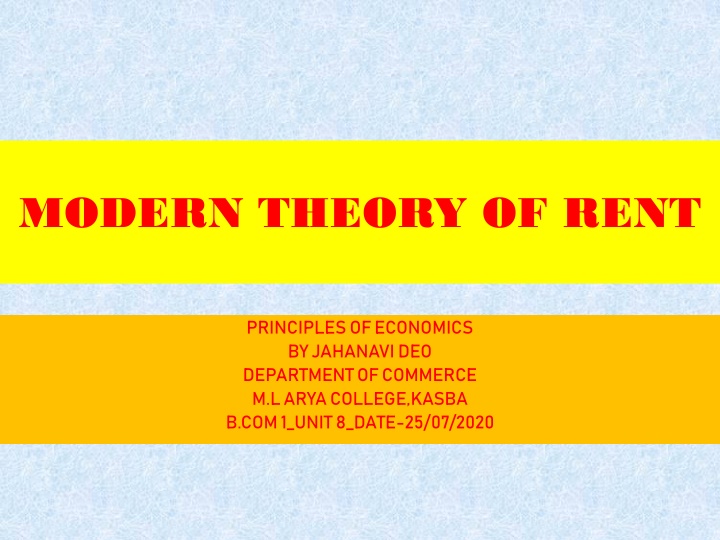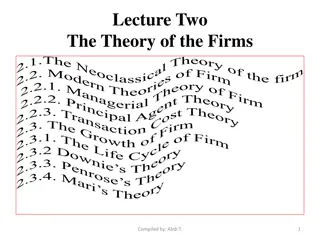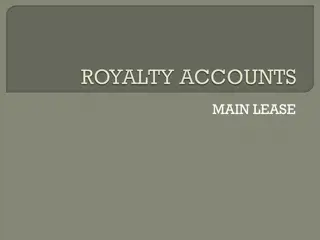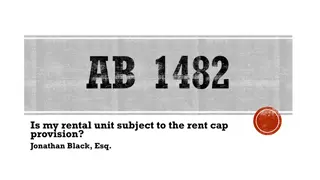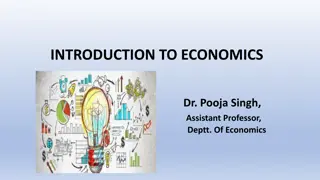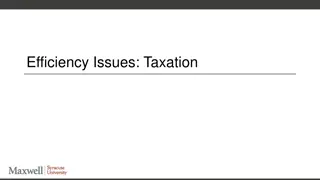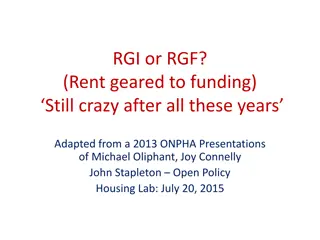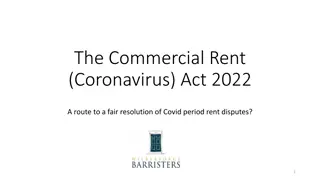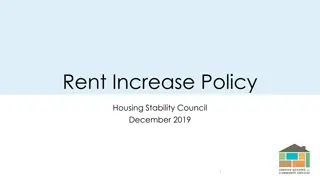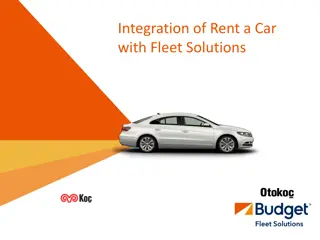Modern Theory of Rent: Principles of Economics Amplified Version
Modern theory of rent is an enhanced version of Ricardian theory, introducing the concept of economic rent as a surplus not exclusive to land. It expands upon the idea that rent is the difference between actual earning and transfer earning across factors of production like labor and capital. Transfer earning refers to the amount a unit could earn in its best alternative use. The definition of rent is explored by different economists, emphasizing the idea of surplus earnings beyond transfer earnings.
Download Presentation

Please find below an Image/Link to download the presentation.
The content on the website is provided AS IS for your information and personal use only. It may not be sold, licensed, or shared on other websites without obtaining consent from the author.If you encounter any issues during the download, it is possible that the publisher has removed the file from their server.
You are allowed to download the files provided on this website for personal or commercial use, subject to the condition that they are used lawfully. All files are the property of their respective owners.
The content on the website is provided AS IS for your information and personal use only. It may not be sold, licensed, or shared on other websites without obtaining consent from the author.
E N D
Presentation Transcript
MODERN THEORY OF RENT PRINCIPLES OF ECONOMICS BY JAHANAVI DEO DEPARTMENT OF COMMERCE M.L ARYA COLLEGE,KASBA B.COM 1_UNIT 8_DATE-25/07/2020
Modern theory of rent is an amplified and modified version of Ricardian theory of Rent. It was first of all discussed by J.S. Mill and after that developed by economists like Jevons, Pareto, Marshall, Joan Robinson etc. According to modern theory, economic rent is a surplus which is not peculiar to land alone. It can be a part of income entrepreneur. According to modern version rent is a surplus which arises due to difference between actual earning and transfer earning. That That is is: : Rent = Actual Earning-Transfer Earning. of labour, capital,
What What is is Transfer Transfer Earning? In this universe, each factor of production has varied uses. When we transfer one factor from one use to another, we have to sacrifice the income earned by it from its earlier use. Sacrifice of earning is called transfer earning. Basically, the concept of transfer earning in economics is introduced by Prof. Benham. According to him, The amount of money which any particular unit could earn in its best paid alternative use is sometimes called its transfer earnings. A similar idea was developed by Pigou. Different economists consider transfer earnings as that amount of money which any particular unit could cam in its best paid alternative use. Earning?
Thus, what a person, piece of land or capital can earn in the next best alternative use is known as transfer earnings. Thus, according to Mrs. Robinson, The price which is necessary to retain a given unit of three factors in a certain industry may be called its transfer earning. Suppose a piece of land can cam Rs. 100/- when it is used for producing wheat and the same amount if it is used for cotton. There is no extra earning because there are no transfer earnings. If, however, the same piece of land could cam Rs. 60 when put to the use of cotton. Its transfer earning would be Rs. 40 and the extra gain of Rs. 40 which is surplus could be called Rent. So, according to this theory, we can define rent as a payment of excess of the transfer earnings. In the words of Benham, In general the excess of what any unit gets over its transfer earnings is of the nature of rent. In the above example, true rent is Rs. 10 and transfer earning Rs. 40.
Modern Modern Definitions Definitions of of Rent Rent is a payment in excess of transfer earning. Stonier and Hague The essence of the conception of rent is the conception of a surplus earned by a particular part of a factor of production over and above the minimum sum necessary to induce it to do its work . Mrs. Joan Robinson Rent: :
Features Features of of Modern The major features of the modern theory of rent are as under: 1. Rent can be a part of the income of all factors of production. 2. Amount of rent depends upon the difference between actual earning and transfer earning. 3. Rent arises when supply of the factor is either perfectly inelastic or less elastic. Modern Theory Theory of of Rent Rent: :
Why Why Rent According to modern theory, rent arises due to scarcity of land. Supply of other factors like labour, capital etc. can also be scare in relation to demand. Therefore, income earned by these factors in excess of their minimum income is called economic rent. Prof. Wieser divided factors of production into two parts viz.; specific factors and nonspecific factors. Specific Specific Factors Factors: : These factors refer to those factors which have only one use. For example, a farm used for growing wheat alone. Such factors have no mobility. Rent Arises Arises: :
Non Non- -Specific Specific Factors These factors are those which have mobility and can be put to different uses. It is only due to the reason that specific factors cannot be put to another use. Specificity of factors is the main cause of the emergence of rent. It is so because specific factors cannot be put to any other use. So, its opportunity cost is zero. In other words, its transfer earning is zero. So its entire actual earning in the existing use is rent. Factors: :
